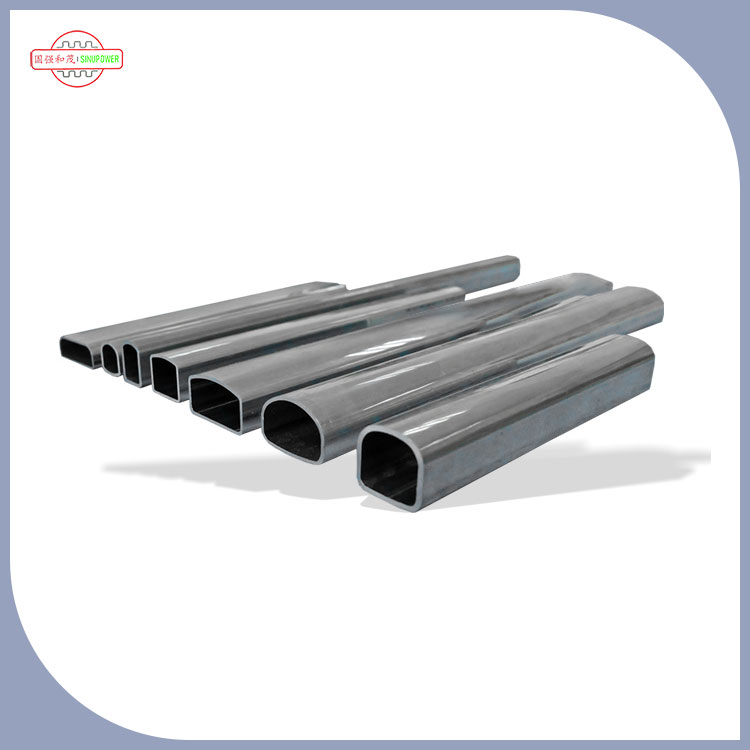
Regular maintenance is required to keep D-Type Condenser Header Aluminium Pipes functioning properly. This includes cleaning the pipes to remove any debris or corrosion that may have built up over time, checking for leaks, and repairing any damage that has occurred to the pipes. It is also important to inspect the pipes periodically to ensure that they are still functioning effectively and to identify any potential issues before they become serious problems.
The frequency of maintenance required for D-Type Condenser Header Aluminium Pipes will depend on a variety of factors, including the specific application, the age of the pipes, and the condition of the pipes. In general, it is recommended that these pipes be inspected and cleaned on a regular basis, with more frequent maintenance required if the pipes are used in harsh or corrosive environments.
Some common issues that can occur with D-Type Condenser Header Aluminium Pipes include corrosion, leaks, and damage to the pipes. Corrosion can occur due to exposure to harsh chemicals or high temperatures, and can lead to decreased performance or failure of the pipes. Leaks can be caused by damage to the pipes or by improper installation or maintenance, and can result in the loss of fluid or decreased efficiency of the heat exchanger. Damage to the pipes can be caused by a variety of factors, including impact or exposure to extreme temperatures or pressures.
To prevent issues with D-Type Condenser Header Aluminium Pipes, regular maintenance is key. This includes inspecting the pipes for damage or corrosion, cleaning the pipes on a regular basis, and repairing any damage as soon as it is detected. It is also important to ensure that the pipes are installed and used correctly, and that they are not exposed to environments that could cause damage or corrosion.
D-Type Condenser Header Aluminium Pipes offer a number of benefits over other types of heat transfer tubes. These include their high thermal conductivity, which allows for efficient heat transfer between fluids, their lightweight and durable construction, which makes them easy to install and maintain, and their resistance to corrosion, which helps to prolong the lifespan of the pipes.
D-Type Condenser Header Aluminium Pipes are an important component in many different types of heat exchangers. Regular maintenance is required to keep these pipes functioning effectively, and to prevent issues such as corrosion, leaks, and damage. By following the proper maintenance procedures and taking steps to prevent damage and corrosion, D-Type Condenser Header Aluminium Pipes can provide efficient and reliable heat transfer for many years to come.
Sinupower Heat Transfer Tubes Changshu Ltd. is a company that specializes in the production of heat transfer tubes for industrial applications. Our products are manufactured to the highest standards of quality and reliability, and are designed to provide efficient and effective heat transfer in a variety of different environments. For more information about our products and services, please visit our website at https://www.sinupower-transfertubes.com or contact us at robert.gao@sinupower.com.
1. W. M. Kays and A. L. London, 1958, "Compact Heat Exchangers," The Chemical Engineering Journal, Vol. 8.
2. K. Vafai and K. S. Kim, 2006, "Analysis of heat transfer enhancement in a heat exchanger with rectangular and circular wavy tubes," International Journal of Heat and Mass Transfer, Vol. 49.
3. M. J. Rosen and D. D. Cho, 1989, "Heat transfer and friction in helically corrugated tubes," International Journal of Heat and Mass Transfer, Vol. 32.
4. M. K. Jensen and P. Rubner, 2012, "Convective heat transfer in microchannels with structured surface," International Journal of Heat and Mass Transfer, Vol. 55.
5. J. V. Beck and A. J. Bar-Cohen, 1993, "Heat Transfer Handbook," Wiley Interscience, New York, NY.
6. L. Y. Chen, Z. Y. Guo, and X. Q. Wang, 2014, "Experimental investigation of heat transfer enhancement of wavy fin-and-tube heat exchangers," International Journal of Heat and Mass Transfer, Vol. 71.
7. S. K. Kundu, S. K. Saha, and P. K. Das, 2009, "Experimental investigation on heat transfer augmentation in a tube fitted with helical twisted tape inserts," International Journal of Heat and Mass Transfer, Vol. 52.
8. D. Y. Tann and K. Pericleous, 2016, "A multi-scale numerical study of convection heat transfer in a microchannel," International Journal of Heat and Mass Transfer, Vol. 99.
9. J. R. Thome, 2004, "Enhanced heat transfer: a review of the technology and its applications," Annual Review of Heat Transfer, Vol. 13.
10. A. E. Bergles and R. L. Webb, 1974, "Heat exchanger design, Part 1: Flow regime, types, and selection," Heat Transfer Engineering, Vol. 1.